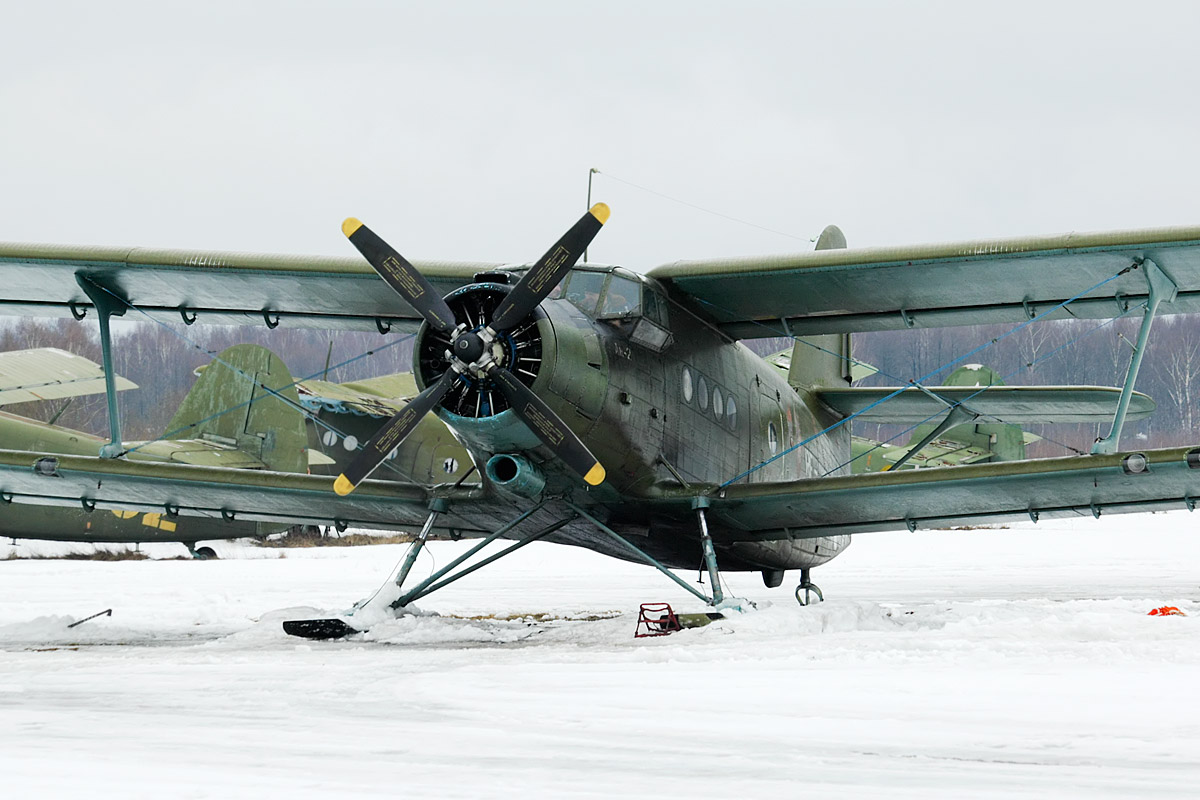As military experts across the world keenly follow the Ukraine war, many are left wondering why Russia has not really used its aerial power as it boasts some of the best fighter jets and bombers.
However, President Putin may have a surprise in store for such commentators with the latest reports suggesting that Russia may be preparing to use its Antonov AN-2 ‘Colt’ biplanes in the Ukraine war.
Maxar’s satellite imagery and intelligence analysis reveal that 42 AN-2 planes, originally designed and developed in Ukraine, have been stationed at Sescha Air Base in Bryansk Oblast, a federal region in western Russia that shares a border with northern Ukraine.
This follows a report by US defense commentator Dylan Malyasov in early February that first pointed out footage of almost a dozen AN-2 aircraft flying in close formation over Russia’s border areas with Ukraine.
Malyasov suggested that Russian forces have tested the use of AN-2s as decoys to locate Ukrainian air defense positions and radar emitters which could then be followed up with hits by anti-radiation weapons, standoff munitions, or electronic countermeasures.

In addition to AN-2s, Maxar’s situation report for March also notes the deployment of electronic warfare aircraft to Seshcha, adding more substance to Malysov’s suggestion.
“Over the next few days we are going to see Russia using more electronic warfare . . . and Ukrainian air defense systems will go increasingly offline,” said Mathieu Boulègue, a research fellow at the Russia and Eurasia Programme at Chatham House, a London-based policy institute.
In 2020, Azerbaijan had successfully demonstrated this tactic against Armenians in the Nagorno-Karabakh conflict. The Azerbaijani pilots flew their AN-2s over Armenian positions and then locked the aircraft’s controls using belts.
After that the pilot bailed out to safety letting the unmanned aircraft fly directly towards Armenian units, forcing the ground troops to open fire thus giving away their positions.
Lightweight, Low-Speed Aircraft
The single-engine AN-2 biplane first appeared in 1947, as the Soviet Union was rebuilding itself from post-World War II turmoil. Although it was developed by Ukraine’s Antonov Design Bureau as a utility/agricultural aircraft, the AN-2 proved to be a highly adaptable aircraft for both civilian and military purposes.
The first 5,000 units of the plane were produced at Antonov’s factory in Kyiv. After 1960, most AN-2s were built in Poland.
AN-2’s design offers an excellent combination of lightweight and low-speed performance which makes the aircraft ideal for low flying missions aimed at penetrating deep inside the enemy lines without getting detected.
Therefore, AN-2 makes for an ideal platform for paratrooper missions. AN-2s can also be used for insertion of the Russian troops close to Ukrainian targets, whether to capture them or for covert missions such as conducting sabotage or forward reconnaissance, etc. Their ability to fly low at slow airspeed provides for a small radar cross-section area, making them a difficult target for Ukrainian air defense systems to detect.

Besides, radars of some of these defense systems are set to filter out low-speed objects such as AN-2s that can be flown by a pilot with full control at a speed as low as 48 km/h (30 mph).
Justin Bronk, a research fellow for air power at the Royal United Services Institute (RUSI), told The War Zone that AN-2s can be fielded for logistical purposes as well.
“They (AN-2s) might be used to help alleviate some of the worst supply shortages at key points in the Russian advance caused by the ground forces’ appalling logistics failures,” said Bronk.
The Ukrainian air force and air defenses continue to operate despite being outmatched by the Russian military in terms of numbers and firepower. According to US defense officials cited by Reuters, the Russians seem to be unwilling to put their aircraft and pilots at risk, which could be the reason why President Putin has not yet ordered a full-scale deployment of air assets in the hostile airspace.
Nevertheless, things could change in the next few days if Russia decides to deploy the bygone-era AN-2s from the Sescha Air Base, located only around 250 miles away from Kyiv, the Ukrainian capital.
- Mail ET Desk at: etdesk@eurasiantimes.com
- Follow EurAsian Times on Google News




